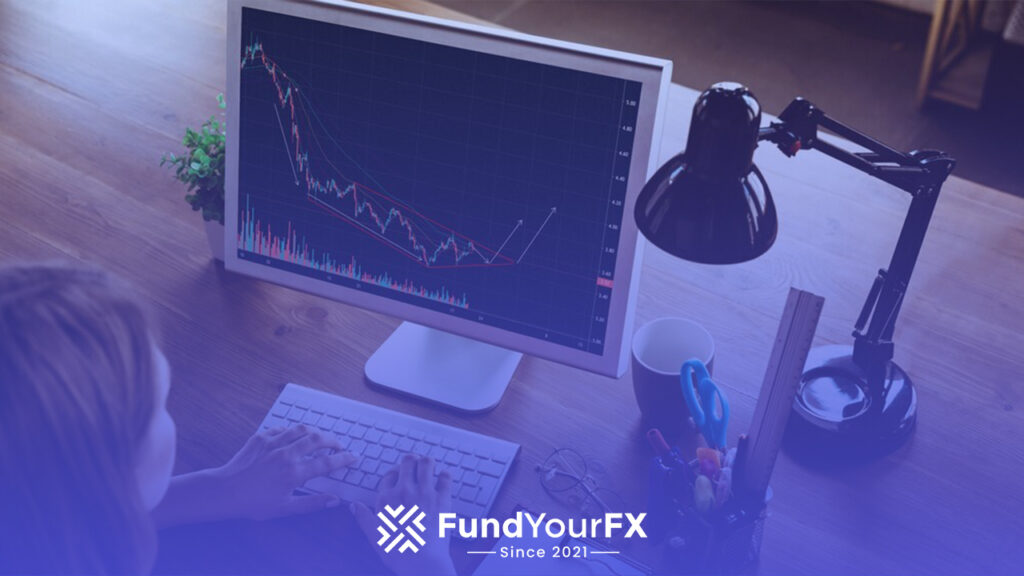Trying to make sense of the stock market can feel like riding a rollercoaster—thanks to something called market volatility. One moment prices are climbing, the next they’re heading south. If you’ve ever wondered whether the market is currently “high” or “low,” you’re not alone. It’s a common question for investors, especially during times of uncertainty.
The good news? By understanding market volatility and looking at a few key indicators, you can get a clearer picture of where the market stands. In this article, we’ll break it all down in a simple, no-stress way. Let’s get started!
What is Meant by Market Volatility?

Market volatility is all about how much the price of a financial asset changes over time. Think of it as the ups and downs in the price of stocks, bonds, or other investments. When we say an asset has high volatility, it means its price can swing dramatically in a short amount of time. On the flip side, low volatility indicates that the price stays more stable and doesn’t fluctuate much.
So, what causes this volatility? Several factors can play a role. For instance, economic news, earnings reports from companies, geopolitical events, shifts in interest rates, and the overall mood of the market can all contribute to price changes. Because of this, volatility is often used as a measure of risk; higher volatility usually means there’s a greater chance of experiencing significant gains or losses.
In the financial world, there are tools to help us understand volatility better. One such tool is the VIX, or Volatility Index. This index measures the market’s expectations of future volatility based on options prices. Investors often keep an eye on the VIX to gauge market conditions and decide whether to buy, hold, or sell their investments.
What Does 20% Volatility Mean?
When we talk about an asset having a volatility of 20%, we’re saying that its returns can vary significantly—specifically, the standard deviation of those returns is 20%. This means that, on average, you can expect the asset’s price to fluctuate by 20% above or below its average return over the course of a year.
Let’s break it down with an example. Imagine you own a stock that has an average annual return of 10% and a volatility of 20%. In a typical year, you could reasonably anticipate that this stock might return anywhere from -10% to +30%. That’s because you’re factoring in that 20% variability (10% minus 20% to 10% plus 20%).
Now, why does this matter? Well, volatility is often seen as a measure of risk. Higher volatility means that the asset’s price can change dramatically in a short amount of time, which can be exciting but also daunting. On the flip side, lower volatility usually indicates a steadier, more stable investment, which can be appealing for those who prefer less risk.
What Causes Market Volatility?
- Economic Indicators: Changes in economic data, such as unemployment rates, GDP growth, and inflation, can lead to market fluctuations as investors adjust their expectations about future economic performance.
- Interest Rates: Central banks, like the Federal Reserve, influence interest rates through monetary policy. Changes in interest rates can affect borrowing costs and consumer spending, leading to shifts in market sentiment.
- Earnings Reports: Company earnings announcements can significantly impact stock prices. Better or worse-than-expected earnings can lead to rapid price changes and increased volatility.
- Geopolitical Events: Political instability, wars, trade disputes, and other geopolitical tensions can create uncertainty in the markets, leading to increased volatility as investors react to potential risks.
- Market Sentiment: Investor psychology plays a critical role in market behavior. Fear and greed can drive prices up or down rapidly, leading to volatility.
- Technological Changes: Innovations and disruptions in technology can impact entire industries, affecting stock prices and investor confidence.
- Market Liquidity: Low liquidity can exacerbate volatility, as fewer transactions can lead to larger price swings. In illiquid markets, even small trades can cause significant price changes.
- Speculation and Trading Strategies: High-frequency trading and speculative trading strategies can contribute to rapid market movements, as algorithms react to market conditions in real-time.
- Natural Disasters and Pandemics: Events like hurricanes, earthquakes, or health crises (e.g., the COVID-19 pandemic) can disrupt economies and supply chains, leading to uncertainty and volatility.
- Regulatory Changes: New regulations or changes in government policy can impact businesses and industries, creating uncertainty and affecting market stability.
Overall, market volatility is often the result of a complex interplay of these factors, and it can vary significantly over time and across different markets.
What is The Best Indicator for Market Volatility?
One of the most well-known measures of market volatility is the VIX, or the Volatility Index. This indicator offers insights into what investors expect for market fluctuations over the next 30 days based on the pricing of options for the S&P 500. Let’s explore some key points about the VIX and other volatility indicators that can help you make more informed investment decisions.
- VIX (Volatility Index): Often dubbed the “fear index,” the VIX serves as a barometer for market sentiment. When the VIX rises, it typically indicates that investors are feeling more uncertain and may be bracing for potential downturns.
- Historical Volatility: This metric looks at how much a security’s price has varied over a specific timeframe. By analyzing past price movements, historical volatility helps traders understand how much an asset has fluctuated, which can provide valuable context for future expectations.
- Average True Range (ATR): The ATR is another useful tool that measures market volatility. It considers the range of price movements over a designated period and helps traders gauge how much an asset’s price is likely to swing, providing a clearer picture of potential risk.
- Bollinger Bands: This popular technical analysis tool consists of a central moving average and two lines representing standard deviations. When the bands widen, it signals increased volatility, while narrower bands suggest a period of lower price fluctuations.
By familiarizing yourself with these indicators, you can enhance your understanding of market dynamics and make more strategic trading decisions. Whether you’re a seasoned investor or just starting out, keeping an eye on these volatility measures can help you navigate the ups and downs of the market with greater confidence.
How to Identify Market Volatility?

Understanding market volatility is crucial for traders and investors alike, as it reflects the degree of price fluctuations in financial markets. There are several key methods to assess this volatility, including various indicators and analysis techniques. The VIX, often called the “fear index,” measures expected volatility in the S&P 500 based on options pricing, while historical volatility provides insights into past price movements. Additionally, the Average True Range (ATR) helps gauge volatility by analyzing price ranges over a set period.
Price movement analysis plays a significant role in identifying volatility as well. Observing daily price ranges and candlestick patterns can reveal larger price swings, indicating heightened market activity. Volume analysis is also essential; spikes in trading volume typically accompany significant price movements, signaling increased volatility. Beyond technical indicators, external factors such as news events, economic reports, and geopolitical developments can further impact market sentiment and lead to fluctuations.
Lastly, a comprehensive approach to assessing volatility includes evaluating market breadth, utilizing technical analysis tools like Bollinger Bands and MACD, and monitoring options market activity. These methods, coupled with awareness of key economic indicators, provide traders and investors with a well-rounded understanding of market dynamics. By combining these various techniques, individuals can make more informed decisions and navigate the complexities of market volatility effectively.
- Volatility Indicators: VIX, Historical Volatility, ATR
- Price Movement Analysis: Daily price ranges, candlestick patterns
- Volume Analysis: Increased trading volume signals volatility
- Economic Indicators: Inflation rates, employment data, interest rates
How to Tell if a Market is High or Low?
Investing can feel a little overwhelming, especially when you’re trying to figure out whether the market is riding high or hitting a low point. The good news? There are some clear signs you can watch for that’ll help you understand what’s going on. Let’s walk through it.
Market Indicators
First up, take a peek at some key market indicators. The S&P 500, Dow Jones Industrial Average, and NASDAQ composite are popular benchmarks that can give you a quick snapshot of market performance. If these indices are reaching new heights, it may suggest that the market is on the higher end. Conversely, if you see these numbers dropping, it might be a sign that the market is in a low phase.
Economic Data
Next, let’s dive into the economic data. This includes indicators like GDP growth, unemployment rates, and inflation. When the economy is booming – think strong GDP growth and low unemployment – it often goes hand-in-hand with a high market. On the flip side, when these indicators show signs of struggle, it could mean the market is not doing so well.
Market Sentiment
Don’t underestimate the power of market sentiment! Keeping an eye on how investors feel about the market can be very revealing. Tools like the Fear & Greed Index can help you gauge the mood. If investors are feeling overly optimistic and jumping in with enthusiasm, that might indicate a high market. If there’s a general air of caution or fear, it could signal a low market.
Valuation Metrics
Finally, let’s talk about valuation metrics, particularly the Price-to-Earnings (P/E) ratio. This ratio compares a company’s current share price to its earnings per share. If the P/E ratio is significantly high compared to historical norms, it can point to an overvalued market, suggesting it’s high. Conversely, a low P/E ratio might indicate that the market is undervalued, hinting at a lower market state.
Conclusion
Understanding market volatility is essential for making smarter investment decisions. By keeping an eye on key indicators, recognizing what causes price swings, and using the right tools, investors can better navigate the ups and downs of the market. Whether you’re just starting out or have years of experience, staying informed about volatility can help you manage risk and invest with greater confidence.







